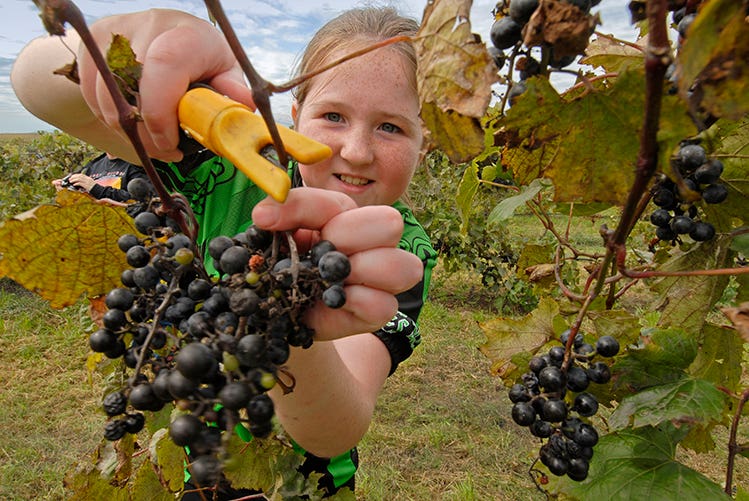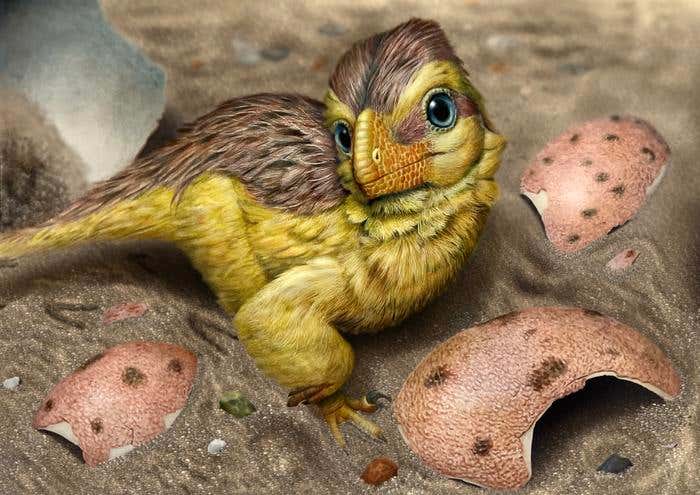Grapes may have first grown in the Americas, not Europe, study finds
Ancient fossil seeds reveal grapes evolved in the Neotropics 60 million years ago, reshaping the story of their global spread.

Fossilized grape seeds discovered in tropical Latin America reveal grapes originated in the Neotropics, not the Old World, millions of years ago. (CREDIT: CC BY-SA 4.0)
The lush, tropical regions of Central and South America have long dazzled scientists with their plant diversity. These Neotropical zones, stretching from southern Mexico to northern Argentina and including the Caribbean, hold nearly a third of the world’s vascular plant species.
This extraordinary richness didn’t arise overnight. It evolved over millions of years, shaped by natural forces like shifting continents, changing climates, mass extinctions, and plant migrations. But a major piece of this evolutionary puzzle—how and when certain plants disappeared or arrived—has been hard to solve without a strong fossil record.
Now, a major discovery is helping fill in that missing history. Fossil seeds from the grape family, Vitaceae, found in Panama, Colombia, and Peru, provide a new window into ancient rainforests.
These fossils, some dating back 60 million years, reveal that the ancestors of today’s grapes were growing in the Neotropics far earlier than once thought. They show that the tropical Americas were not just a site of plant diversification but also one of repeated extinction and dispersal.
Fossils Reveal Ancient Grapes in the Tropics
In a study published in Nature Plants, paleobotanists including Mónica Carvalho from the University of Michigan and Fabiany Herrera from Chicago’s Field Museum described nine fossil grape species discovered in four fossil-rich tropical sites. One of these fossils is the oldest known grape seed found in the Western Hemisphere, offering strong evidence that grapes have deep roots in the New World.
The fossil record revealed that these ancient grapes belonged to the Vitoideae subfamily, which includes most living grape species. These plants—woody climbers and vines—are still found today in the tropics, from Mexico down to Patagonia. But the fossils also include extinct species that once belonged to major grape lineages now found only in places like Southeast Asia and the Indo-Pacific. This suggests that parts of the grape family once thrived across the Neotropics but later vanished.
“This led us to revise the fossil record of grapes in the New World,” Carvalho said. “We found seeds related to the grape family dating back 60 million years.” Her team’s findings challenge earlier beliefs that grapes mainly evolved in the Old World and arrived in the Americas much later.
Related Stories
Grapes Spread After the Dinosaurs Fell
The story of these ancient grapes starts just after one of Earth’s most dramatic extinction events. Around 66 million years ago, a massive asteroid impact ended the age of dinosaurs and wiped out much of the planet’s plant life. In the tropical Americas, forests were devastated. But they didn’t stay barren for long. As life bounced back, new rainforests formed—full of opportunity for evolving species.
It was in these reborn tropical forests that the ancestors of modern grapes began to flourish. “Within these early neotropical rainforests, we find the earliest record of Vitoideae,” Carvalho said. “That tells us this grape lineage dates back to the origin of those forests.” These early grapes took advantage of the fresh ecosystems, spreading across the region as new animals—particularly birds and mammals—emerged and helped disperse their seeds.
Herrera adds, “After the extinction of the dinosaurs, grapes really started to spread across the world.” As the Earth warmed during the Paleocene and Eocene epochs, grapes reached into higher northern latitudes, turning up in fossil records from North America and Europe about 50 million years ago.
A Hidden History of Dispersal and Disappearance
The fossil evidence from the Neotropics fills a gap in what scientists knew about grape evolution. Before this discovery, most fossil records of Vitaceae came from North America and Eurasia. That skewed the understanding of this mostly tropical plant family’s past.
By finding fossils in Central and South America, the new study shows that grape evolution was far more global than once assumed. It also underscores the importance of extinction in shaping what species survive today. Some groups of grapes that once lived in the tropics are now gone, known only from their seeds in ancient soil layers.
These regional extinctions weren’t isolated events. They happened over tens of millions of years, often triggered by climatic shifts and geological changes. As continents moved and climates cooled or warmed, certain grape lineages couldn’t adapt and disappeared from some areas—even if they survived elsewhere. Meanwhile, others continued to migrate, aided by birds, mammals, and evolving forest ecosystems.
The result is the complex distribution seen today: six grape genera in the Neotropics, mostly in forests from the Caribbean to Patagonia, and others that exist only in Asia or Africa. This patchwork of presence and absence tells a story not just of survival, but of continual movement and loss.
A Revised View of Botanical Evolution
Vitaceae holds a special place in plant studies due to its unique position in the plant family tree and its economic importance. The common grapevine, Vitis vinifera, is part of this group, but it represents just one small branch of a sprawling lineage that once stretched across entire continents.
Despite its ancient lineage, Vitaceae’s story had been partly hidden until now. The fossils from Panama, Colombia, and Peru make it clear that extinction has played a much larger role in shaping today’s tropical forests than previously known.
Carvalho emphasized how these findings refine scientists’ view of grape evolution. “There was a significant gap in the fossil record of grapes after the extinction of dinosaurs,” she said. “By about 50 million years ago, we see fossil grapes in North America and Europe… but we didn’t know much about the history of this group in tropical latitudes.”
That knowledge gap has now been narrowed. The Neotropics were not just places where new species evolved; they were also regions where ancient lineages came and went, changing the face of plant diversity over time.
The research also highlights the power of the fossil record in reshaping scientific thinking. Fossils don't just tell scientists what used to live—they also reveal how ecosystems responded to ancient crises, migrations, and environmental shifts.
As scientists continue to uncover more fossils in underexplored regions like the Neotropics, our understanding of plant evolution will only deepen. Studies like this one don’t just revise one family’s story—they help explain how the entire green fabric of Earth came to be.
Note: The article above provided above by The Brighter Side of News.
Like these kind of feel good stories? Get The Brighter Side of News' newsletter.



